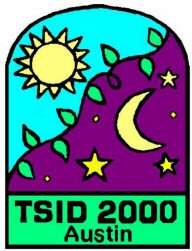Specialized Interpreter Settings Track
First Things First
TSID 2000

Specialized Interpreter Settings TrackFirst Things FirstTSID 2000 |
 |
Currently there is no description available for this workshop.
The presentation will provide a comfort, confidential and safe environment for all interpreters. We will begin with an introduction of Mental and Substance Use Disorders and definitions of DSM IV; followed by an explanation of the basic characteristics of the disorders. Participants will learn the conceptualization of signs utilized during the psychotherapeutic processes. Time will be allowed for practice and “hot seat” role plays. Participants will identify “emotional intelligence” self-assessment tool prior to interpreting in the mental health settings. The presentation will continue with the rap session, as a modeling process, on the conflicts between interpreter ethics and psychotherapeutic processes. The presentation will conclude with a discussion of establishing the positive and healthy support system and with a time for questions.
Introduce the concept of hearing and deaf interpreter working together as a team. It will cover how to work, to monitor, to support one other and at the same time, abiding the guidelines. It will also includes various subjects such as "Your role as deaf interpreter", "Preparation and Setting", "How to introduce yourself to the system and explain why you are there to work", "Code of Ethics", "Affect and Neutral", "Interpret at Mental Health Settings", and brief on "Linguistic Comprehension". Intensive concentration on working with deaf Alien, deaf people with their preference language and those with minimal language skills shall be followed up on Sunday morning.
Make the communication get across in the most effective manners. It does not focus mainly on minimal language skills, it also includes people from different countries, and deaf people with their preference language. Deciding which vocabulary choices should be used to maintain the integrity of message. How to avoid the power of vocabulary choices when relay the message. Promoting thinking in many different ways to communicating, such as using body language, acting in mime, drawing and gestures.